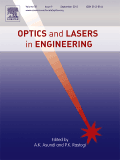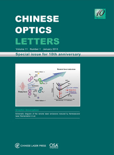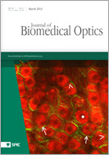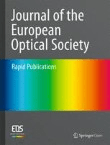
OPTICS AND LASERS IN ENGINEERING
metrics 2024
Illuminating Innovations in Laser Technology
Introduction
OPTICS AND LASERS IN ENGINEERING, published by Elsevier Science Ltd, is a premier journal dedicated to advancing the field of optics and laser technology in engineering applications. With a robust ISSN of 0143-8166 and E-ISSN 1873-0302, this journal is positioned within the top quartile (Q1) across several categories, including Atomic and Molecular Physics, Electrical Engineering, and Mechanical Engineering as of 2023, showcasing its prestige and impact in the scientific community. The journal has consistently ranked high in Scopus, notably within the top 10% for Mechanical Engineering and Electronic, Optical, and Magnetic Materials research. Since its inception in 1980, OPTICS AND LASERS IN ENGINEERING has served as a vital platform for disseminating cutting-edge research, fostering innovation and collaboration among researchers, professionals, and academia. Though it does not currently offer Open Access options, its high impact factor and selective publication process ensure that articles reach a wide audience while maintaining rigorous academic standards. Researchers and students alike are encouraged to engage with this influential journal to contribute to and stay abreast of advancements in optical technologies and their engineering applications.
Metrics 2024
 1.01
1.01 3.50
3.50 4.20
4.20 123
123Metrics History
Rank 2024
Scopus
IF (Web Of Science)
JCI (Web Of Science)
Quartile History
Similar Journals

Chinese Optics Letters
Pioneering insights in the realm of optics.Chinese Optics Letters is a prestigious academic journal published by Chinese Laser Press, dedicated to advancing the fields of atomic and molecular physics, optics, as well as electrical and electronic engineering. Since its inception in 2003, this journal has become a significant platform for researchers and professionals to disseminate innovative findings and foster collaboration within these rapidly evolving disciplines. With a commendable Q2 ranking in leading categories including Atomic and Molecular Physics and Electronic, Optical and Magnetic Materials, it ranks favorably within the Scopus database, with notable positions in both engineering and materials science sectors. The journal is headquartered in Shanghai, China, and while additional open access options are not specified, it remains a vital resource for those committed to pushing the frontiers of optical research and applications. As we approach 2024, Chinese Optics Letters continues to play an essential role in shaping scholarly discourse and technological advancement in optics.

Optics Continuum
Illuminating the Future of Optics ResearchOptics Continuum, published by Optica Publishing Group, is a pioneering open access journal dedicated to advancing the field of optics and photonics. Since its inception in 2022, this journal seeks to provide a vital platform for the dissemination of groundbreaking research and innovative developments across several interconnected domains, including electrical and electronic engineering, atomic and molecular physics, and material sciences focused on electronic, optical, and magnetic materials. With impressive rankings in Scopus—placed #384 in Electrical and Electronic Engineering and #109 in Atomic and Molecular Physics—the journal aims to engage a diverse readership comprised of researchers, professionals, and students, promoting collaboration and knowledge exchange. The journal's open access model ensures that cutting-edge research is readily available to all, nurturing an inclusive academic environment. For those interested in staying at the forefront of optics research, Optics Continuum is an essential resource that continuously enriches the global scientific community.

Current Optics and Photonics
Advancing Knowledge in Light and TechnologyCurrent Optics and Photonics is a premier journal published by the Optical Society Korea, focusing on the dynamic and evolving fields of optics and photonics. With an ISSN of 2508-7266 and E-ISSN 2508-7274, it provides a comprehensive platform for scholarly communication, emphasizing innovations, advances in technology, and theoretical developments in atomic and molecular physics and optics. Situated in South Korea's vibrant academic landscape, this open access journal aims to bridge the gap between theoretical research and practical applications, fostering collaboration and knowledge sharing among researchers, professionals, and students alike. Although currently ranked in the Q3 category for both Atomic and Molecular Physics and Optics, with a Scopus rank of #183/224, it showcases significant contributions that enhance understanding in these critical areas. The journal encourages submission of original research articles, reviews, and technical notes, with the objective of driving forward the conversation in optics and photonics throughout its converged years from 2017 to 2024. Embrace the opportunity to contribute to this expanding field and become part of a community that is at the forefront of scientific discovery.

JOURNAL OF BIOMEDICAL OPTICS
Transforming Healthcare Through Optical EngineeringJOURNAL OF BIOMEDICAL OPTICS, published by SPIE-SOC PHOTO-OPTICAL INSTRUMENTATION ENGINEERS, is a premier Open Access journal that has been at the forefront of research in the fields of optical engineering and biomedical applications since its inception in 1996. With an impressive range of studies that span atomic and molecular physics, biomedical engineering, and biomaterials, this journal is consistently recognized for its high-quality publications, evidenced by its Q1 quartile ranking in 2023 for Atomic and Molecular Physics and Optics. The journal’s impact is further validated by its Scopus rankings, placing it in the top 30% of its categories. Designed to facilitate rapid dissemination of innovative advancements in biomedical optics, this journal promotes an interdisciplinary approach, making it an essential resource for researchers, professionals, and students aiming to advance their knowledge and applications of optical technologies in medicine. The journal is committed to broadening access to groundbreaking research, having transitioned to Open Access in 2019, ensuring that the latest findings are available to a global audience.

Optica Pura y Aplicada
Advancing the Frontiers of Optical ScienceOptica Pura y Aplicada, published by the SOC ESPANOLA OPTICA, stands as a vital platform for the dissemination of cutting-edge research in the fields of Atomic and Molecular Physics, Optics, and related engineering disciplines. Established in Spain, this journal aims to foster the advancement of knowledge in optical science and technology by providing a rigorous peer-reviewed publication outlet for scholars, researchers, and practitioners. Despite being categorized in the Q4 quartile across multiple domains, including Engineering and Materials Science, the journal remains committed to contributing meaningful insights and advancements within its scope. With an ISSN of 0030-3917 and an E-ISSN of 2171-8814, the journal effectively reaches a global audience eager to explore innovative applications and theoretical developments in optics and materials science. Researchers and professionals alike will find in Optica Pura y Aplicada a valuable resource for enriching their understanding and practices in an ever-evolving field, fostering collaborations and promoting research growth until its converged conclusion in 2024.

APPLIED OPTICS
Fostering Excellence in Optical ResearchApplied Optics, published by Optica Publishing Group, is a prestigious journal dedicated to the field of optics and photonics. With an ISSN of 1559-128X and an E-ISSN of 2155-3165, this journal serves as a critical platform for researchers, professionals, and students eager to disseminate innovative findings and advancements in applied optics. Established in 1962, it has maintained a significant presence in the academic community, currently holding a Q2 category ranking in various disciplines including Atomic and Molecular Physics, Electrical and Electronic Engineering, and Miscellaneous Engineering as per the 2023 metrics. The journal's reputation is underscored by its solid Scopus rankings, attesting to its influential research output. While not an open-access journal, it continues to offer vital insights and discussions on the latest research topics that are critical to the advancement of technologies in optics, ensuring accessibility to vital knowledge for those within the field.

Biomedical Optics Express
Transforming Medicine with Cutting-Edge OpticsBiomedical Optics Express, published by the prestigious Optica Publishing Group, is an open-access journal that has been at the forefront of the field of biomedical optics since its inception in 2011. With an ISSN of 2156-7085, this journal has established itself as a premier platform for disseminating high-quality research that spans an array of topics in atomic and molecular physics, optics, and biotechnology. As a testament to its scholarly impact, it is currently ranked in the Q1 category for both Atomic and Molecular Physics and Biotechnology, reflecting its commitment to excellence within these disciplines. The journal features cutting-edge articles that foster innovation and collaboration among researchers, professionals, and students who are passionate about applying optical technologies to solve pressing challenges in medicine and biology. Based in the United States, Biomedical Optics Express continues to shape the future of optical science and its applications, inviting contributions that inspire and drive forward the boundaries of knowledge.

Journal of the European Optical Society-Rapid Publications
Pioneering Quick Communication in Optical SciencesJournal of the European Optical Society-Rapid Publications, with ISSN 1990-2573 and published by EDP Sciences S A, is a premier open access journal dedicated to advancing the field of optics and photonics since its inception in 2006. Based in France, this journal serves as a vibrant platform for researchers, professionals, and students to disseminate their findings quickly and efficiently. Achieving a commendable Q3 ranking in Atomic and Molecular Physics and Optics (2023), it reflects a growing impact within the scientific community, despite currently holding a 33rd percentile rank among similar publications in the realm of Physics and Astronomy. The journal fosters an environment of rapid communication and collaboration, making it an invaluable resource for those interested in the latest developments and innovations in optical sciences. With open access ensuring broad visibility for all published work, the Journal of the European Optical Society-Rapid Publications is positioned as a key contributor to enhancing the understanding and application of optical technologies.

Chinese Optics
Exploring the Depths of Optical Science and Technology.Chinese Optics is a premier journal dedicated to advancing the field of optics, encompassing research on atomic and molecular physics. Published by the esteemed Changchun Institute of Optics Fine Mechanics & Physics in China, this journal supports the sharing of cutting-edge findings since its inception in 2010. With an ISSN of 2097-1842, it operates within a competitive landscape, currently positioned in Q3 of the category for Atomic and Molecular Physics and Optics, according to the 2023 metrics. While the journal is not open access, it offers a valuable platform for researchers, professionals, and students to explore and contribute to significant discoveries in the realm of optics and light technology. By fostering scholarly communication, Chinese Optics plays a crucial role in bridging theoretical and practical aspects, making it an indispensable resource for those passionate about the optical sciences.

OSA Continuum
Bridging Theory and Application in Optical SciencesOSA Continuum, published by the Optica Publishing Group, is a distinguished open access journal dedicated to advancing research in the realms of Atomic and Molecular Physics, Optics, and Electronic and Electrical Engineering. Since its inception in 2018, this journal has rapidly positioned itself as a significant platform for disseminating cutting-edge findings, achieving impressive Scopus rankings with a 61st percentile in Electrical and Electronic Engineering and 57th in Atomic and Molecular Physics. Based in the United States, the journal not only promotes scholarly dialogue among researchers and professionals but also plays a crucial role in bridging theoretical advances with practical applications in optical and material sciences. Its open access format ensures broader visibility and accessibility of research outputs, fostering innovation and collaboration across disciplines. With its ongoing commitment to excellence, OSA Continuum is crucial for anyone involved in these dynamic fields.